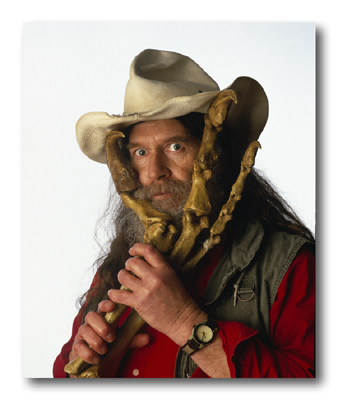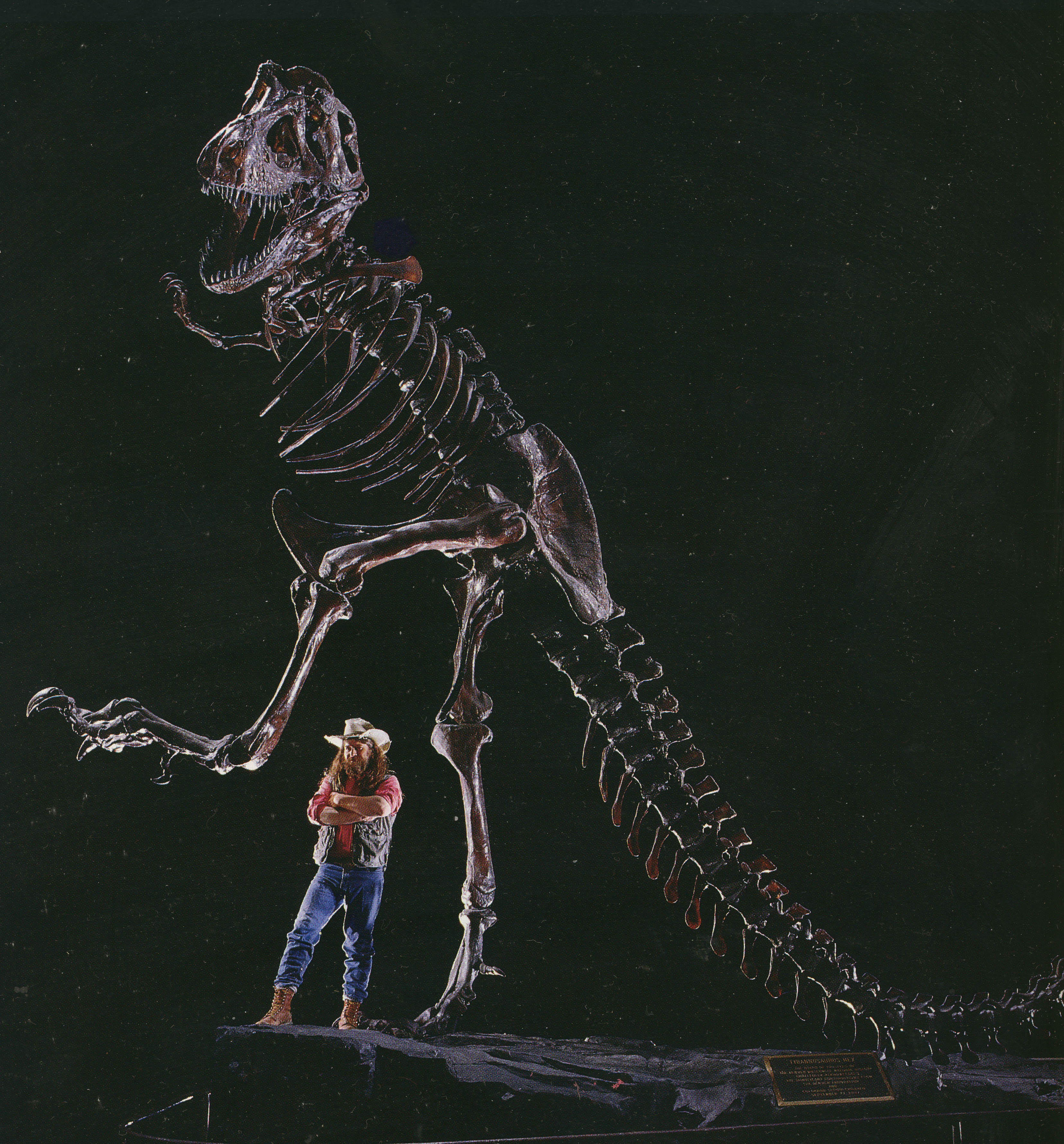No one knows everything, you tell yourself, but after a conversation with Dr. Robert T. Bakker, Curator for the Morian Hall of Paleontology, you might believe there’s someone out there who does.
The world-renowned dinosaur expert is famous for his energetic and entertaining style, and imagining not only the shape and size and habits of creatures extinct for millions of years, but the entire ecosystems in which they lived. Using his imagination to peer through deep time, Bakker sees things other paleontologists wouldn’t — because he chooses to think “outside the box.” This week, he returns to the Houston Museum of Natural Science for three exciting events, sharing his wealth of knowledge on dinosaurs, natural history and geology.
Bakker arrived at HMNS Tuesday morning and hosted the premier of the NOVA science television event Making North America in the Wortham Giant Screen Theatre. The show airs on PBS this November.
Wednesday night, he hosts his own lecture titled T. rex — The Shocking Truth at 6:30 p.m., also in the Wortham. Bakker says the presentation will raise an eyebrow about the common reputation of the famous Cretaceous carnivore Tyrannosaurus rex.
“For example, if you time travel, and it’s at night, and you’re just sitting there watching critters, you hear that the best thing to do is to just sit still,” Bakker said. “That’s what we learn from Jurassic Park. That’s just the wrong answer. T. rex will find you instantly, and all your friends, and the driver of the time-traveling minibus.”
T. rex was a “triple threat,” according to Bakker, with strong vision, hearing and smell, and it was a fast runner. As the apex predator of its time, it was an extremely successful hunter. But that’s not all it was good at. Turns out it was a gentle creature, too.
“The T. rex made excellent parents,” Bakker said. “They were excellent partners, both male and female. If you want to choose really doting, effective, feeling, good role-model parents… be a T. rex.”
If you’d like to know how Bakker determined this, you’ll have to come to the lecture, he said.
In spite of his love for the T. rex, a species that piques the imaginations of children and adults across the world along with the animal’s arch-nemesis, Triceratops, Bakker’s favorite dinosaur is and always has been Ceratosaurus.
“It’s smaller, built lower to the ground, had a muscular tail great for swimming, very sharp, knifelike teeth and a horn on its nose,” Bakker said. “In fourth grade, I saw it in a book called The Fossil Book. And I took a shining to Ceratosaurus. The next year, my parents took us on a trip to Washington, D.C.”
In Washington, Bakker saw the fossil for the first time and was amazed.
“That will change your theology when you’re in the fourth grade in New Jersey,” he said.
The dinosaur is rare and the flexibility of its body and shortness of its legs suggest it probably was best suited to leafing through dense forest and marshland to hunt. The rare dinosaur was found with fish and turtles nearby, likely its primary diet, which would explain the tail suited for swimming, Bakker said.
While his experience meeting Ceratosaurus affected him deeply, Bakker wasn’t interested in dinosaurs until he read a 1953 Life Magazine feature on paleontology written by Lincoln Barnett that spanned the entire issue, he said.
“It was arguably the most beautifully-written feature article ever written,” Bakker said. “It was this gorgeous safari through time, starting with the tiny microbes of the Cambrian, Brontosaurus, Stegosaurus, the Texas Permian red beds, mammoths. … It wasn’t weird prehistoric monsters. The reader asks how and why did these things evolve? … Things were related. The history of life made sense. And I announced to my startled parents that having read Life Magazine, I’m going to grow up and dig fossils.”
His parents continued to believe his affinity for paleontology was just a passing phase, Bakker said, up until the publication of his first book.
“By gum, they read it, and they finally got it,” Bakker said. “Dinosaurs are a part of the history of life on Earth, not a random monster parade.”
Meet Bakker in person at his lecture Wednesday, Nov. 4. and also this Saturday, Nov. 7 at the HMNS Dino Days event Breakfast with Dr. Bakker. Beginning at 9 a.m. on the Morian Overlook and moving downstairs into the Moran Lecture Hall, children and adults can have a meal with Bakker, share ideas about paleontology, listen to a presentation and have a blast doing a variety of dino activities.












